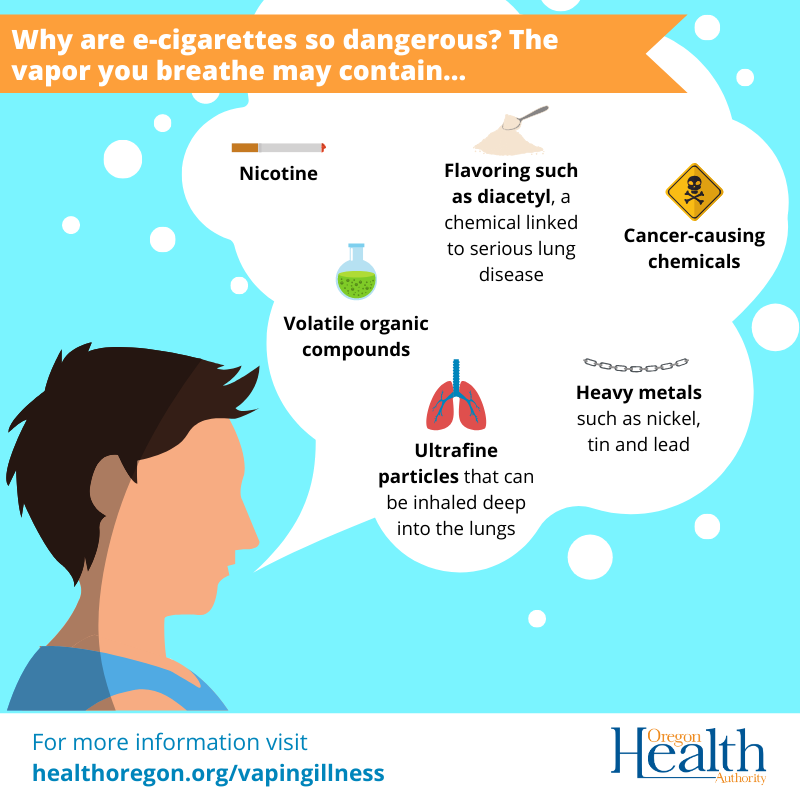Electronic cigarettes, often marketed as a safer alternative to traditional smoking, present significant health risks. Understanding these dangers is crucial for informed decision-making.
Harmful Chemical Exposure
E-cigarette aerosol is not merely “water vapor.” It contains a variety of harmful and potentially harmful substances. These include:

- Nicotine: A highly addictive substance that can negatively impact adolescent brain development, affecting attention, learning, mood, and impulse control. It also poses risks to fetal development during pregnancy.
- Volatile Organic Compounds (VOCs): At certain levels, some VOCs can cause eye, nose, and throat irritation, headaches, nausea, and have been linked to liver, kidney, and nervous system damage.
- Flavoring Chemicals: While many flavorings are safe to ingest, inhaling them can be harmful. Diacetyl, a common flavoring agent, has been linked to a serious lung disease called bronchiolitis obliterans (popcorn lung).
- Formaldehyde and Acrolein: These chemicals can form when e-liquid is heated. Formaldehyde is a known carcinogen, and acrolein can cause irreversible lung damage and is also used as a weed killer.
- Heavy Metals: Traces of metals like nickel, tin, and lead have been found in e-cigarette vapor, likely originating from the heating coil.
Impact on Physical Health
The use of electronic cigarettes has been associated with several adverse health outcomes:
- Lung Damage: Beyond specific chemical-induced conditions, vaping can cause inflammation and irritation in the lungs, potentially leading to chronic bronchitis or other respiratory issues. Severe lung injuries associated with vaping (EVALI) have also been reported.
- Cardiovascular Effects: Nicotine in e-cigarettes raises blood pressure and spikes adrenaline, increasing heart rate and the risk of a heart attack. Some studies suggest that vaping may stiffen arteries and impair blood vessel function.
- Addiction: Nicotine is a primary driver of addiction. Vaping can lead to nicotine dependence, causing withdrawal symptoms such as irritability, anxiety, and strong cravings when use is discontinued.
- Brain Development: The adolescent brain is particularly vulnerable to the effects of nicotine. Exposure during these critical years can have long-lasting consequences on cognitive function and increase the risk of future addiction to other substances.
In conclusion, despite perceptions, electronic cigarettes are not harmless. They expose users to addictive and toxic substances with known adverse health effects on the lungs, heart, and brain, particularly in young people.









